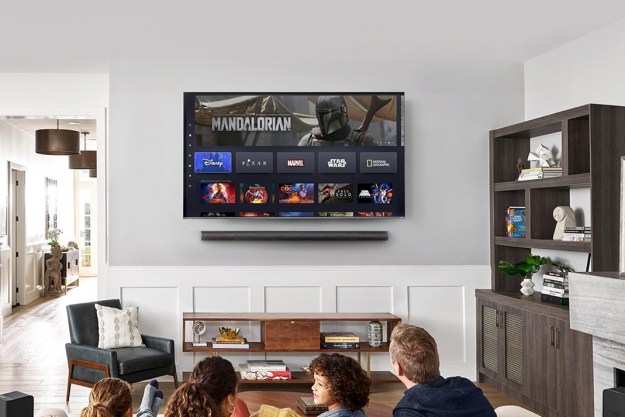The most frustrating thing about wall-mounting a flatscreen TV, besides fishing all those cables through the walls, must be the permanence of it all. After you hoist that 40-inch behemoth up on the wall – it’s there, and you’re not moving it without a lot of muscle. OmniMount’s new Motion40 mount solves that problem by adding some electronic muscle to the equation, allowing you to remotely tilt, pan and swivel a flat screen TV at will.
The Motion40 complements OmniMount’s existing Motion52 mount for larger displays. It handles screens from 23 to 40 inches and up to 66 pounds, which it tugs around using an electric motor. Unlike the larger version, the Motion40 needs only one stud for mounting, and adds a gap of just three inches between the wall and TV. OmniMount also claims the motor is nearly silent, at just 40dB, so it doesn’t sound like you’re trying to winch a Jeep Wrangler out of a ditch every time you go to tilt the screen a few degrees.
The Motion40 will go on sale through OmniMount distributors shortly for $400. The older Motion52 has also had its price dropped from $800 to $600, effective immediately.
Editors' Recommendations
- Hands-on with the Belkin iPhone Mount with MagSafe for Apple TV 4K
- You Asked: how to turn off motion smoothing; Disney+ Atmos issues on Chromecast
- Soundcore’s new Motion speakers are tough little portables with hi-res sound
- Should you mount your TV above a fireplace?
- B&O’s latest full-size luxury speakers feature motorized curtains


